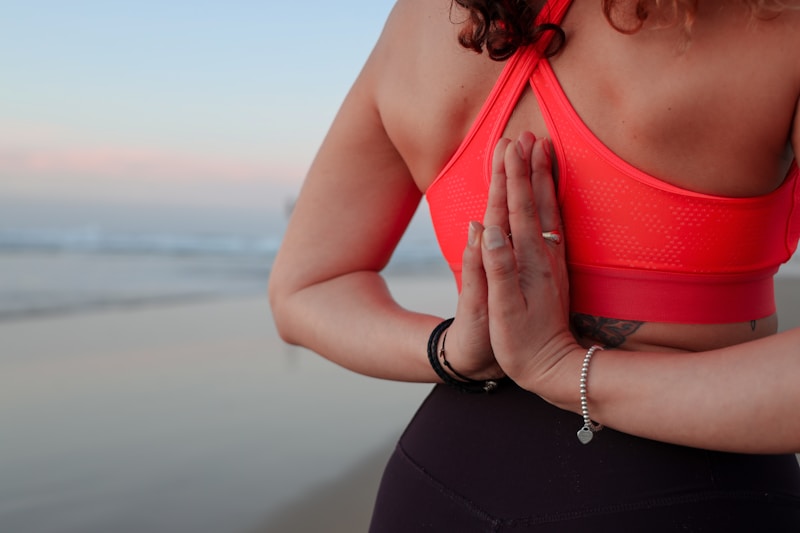Namaste has become a bit of a worldwide phenomenon — even outside of the yoga world it has been coined as a fashionable phrase. I have friends who wear namaste t-shirts who have never done yoga, I see people using the namaste emoji at the end of a long message or when something good happens – namaste has worked its way out of the yoga studio and into popular culture. This week I wanted to get back to basics – take away all the merchandise and trend-setting chat and discuss what namaste means really means at its purest level.
Literally, ‘namaste’ translates as ‘bow I you’ or ‘I bow to you.’ This sign of great reverence did not actually originate in yoga, but rather as a respectful greeting in India. NPR’s Deephak Singh, an Indian writer, explains:
“My parents taught us to say namaste as kids growing up in India. They told my younger sister, my brother and that it was good manners to say namaste to the elders. [The] equivalent of hello, but with an element of respect.”
Namaste in Hindu Tradition
This idea of bowing to someone can be furthered examined by looking at the word ‘namaha’, a common variant of namaste in the Hindu scriptures, which means ‘not mine’. This is often seen in spiritual terms as a separation from the ego — negating our ego in the presence of another and thus allowing ourselves to be truly reverent.
Hindus say namaste during prayers, closing their eyes and bowing, to signify looking into their innermost spirit. The names of gods may accompany this physical movement, particularly amongst devout Hindus, as recognition of the divinity within ourselves. When used outside of prayer, namaste means, ‘may our minds meet,’ hence the touching of palms at the heart centre.
Namaste in Modern Yoga Practice
The idea of simultaneously dismissing the ego and recognising our own divinity is an interesting mix. It’s also not a far cry from the way we use it within our yoga classes in the UK: holding our hands at heart centre as a sign of respect to ourselves, our teachers and our students after a practice.
Yet I believe that it is also something else, something deeper and something that links to the recognition of the divine within ourselves. Not necessarily a ‘god’, but the positive energy inside of us. Namaste is the expression of that positive energy — and our way of releasing it into the world.
Namaste is the embodiment of our whole practice – we may only verbally mention it at the end of our practice, but we are physically acting out its meaning for the entirety of our practice. We are honouring ourselves by taking the time to nourish our mind and body and we are honouring others and the world we live in. The concept disregards religion, culture and societal judgements allowing us to simply connect to ourselves and those around us.
See Also: What Is It About OM That Makes Yogis Tick?
What Does Namaste Mean To You?
Whether you understand the origins of namaste or not, most of us have cultivated our own meaning and solace in it. When I asked one of my teachers she told me how for her, “namaste is the possibility of peace — harnessing the greatness inside of us and sending it out into the universe in the hopes that something good will come from it.” I love this explanation of namaste as hopeful, taking all the positivity created in your yoga practice and sending it out to benefit the entire world: almost as if our mat transcends its physical space on the floor of the yoga studio and soars out to encircle the world in light and energy.
When I asked a friend and avid yogi she explained that for her, “it signifies closure. I have channelled so much focus and energy into my practice and I am releasing myself, letting myself know that all remains now is to soak up the positivity from the class. Everyone has been on their own journey: we are all at different stages, some of us practicing more challenging pose modifications and some of us just starting out, but we are all in the same place at the end, closing the class together with our united namaste.”
Everyone I asked had a different relationship and a different perspective on what namaste was and this, I have come to realise, is what is so great about it. It is, at its core, a mark of respect and gratitude yet it also leaves room for us to embed our own meanings within it. It is closure if we see it as such, it is connection if we choose it be and surely this is a divinity in itself: the power to decide meaning based on your own thoughts and feelings.
As we say namaste we are freeing ourselves, we are not governed by negativity or religion, by culture or ego, and we are simply feeling exactly how we are meant to feel in this moment.
Namaste.













